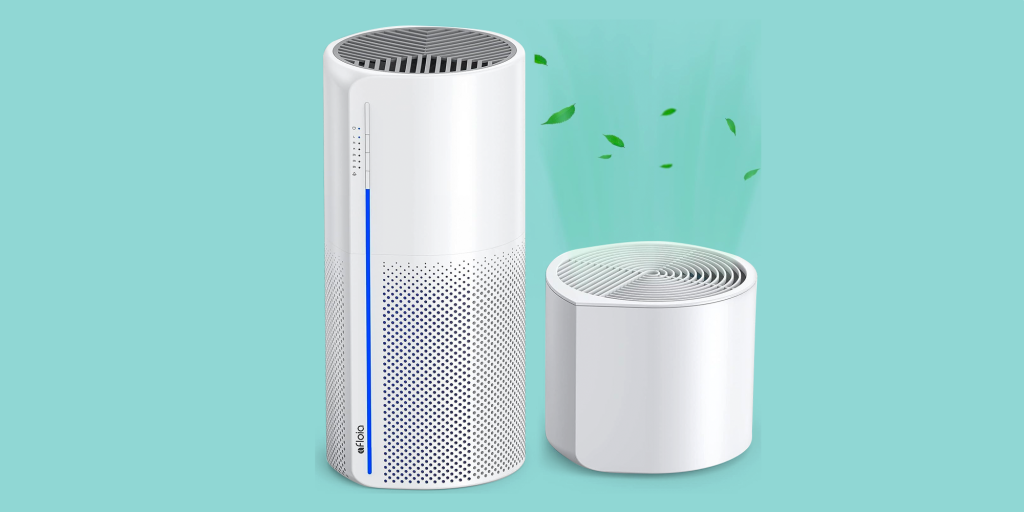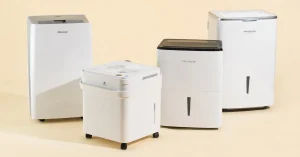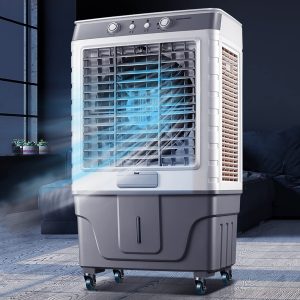Air Purifiers: What Are They For? How They Work, Applications, and Safe Usage Tips

Air purifiers are devices designed to improve indoor air quality by removing pollutants, allergens, and harmful particles. In a world where air pollution is becoming more common, air purifiers have gained popularity for their ability to provide cleaner, healthier air. This article will explore the purpose of air purifiers, how they work, where they are used, and essential safety tips for effective usage.
1. What Are Air Purifiers For? (Introduction, Common Types, and Benefits)
An air purifier is a device that filters and cleans the air in your home, office, or any indoor space by removing harmful particles, dust, smoke, pollen, bacteria, and other pollutants. This helps create a healthier environment, especially for individuals with respiratory issues or allergies.
There are several types of air purifiers, each with distinct features and capabilities:
- HEPA (High-Efficiency Particulate Air) Filters: These purifiers are equipped with filters that capture very fine particles, including dust, pollen, and pet dander. They are especially effective for people with allergies or asthma.
- Activated Carbon Air Purifiers: These use activated carbon filters to absorb gases, smoke, odors, and chemicals, making them ideal for homes with strong odors, such as kitchens or areas exposed to tobacco smoke.
- UV-C Air Purifiers: These purifiers use ultraviolet light to kill bacteria, viruses, and mold spores, providing an extra layer of purification.
- Ionizer Air Purifiers: These release negatively charged ions that attach to particles in the air, causing them to clump together and fall to the floor or be collected by the purifier’s filter.
The main benefits of using an air purifier include:
- Improved Air Quality: Helps to reduce allergens, pollutants, and airborne particles that can cause respiratory problems.
- Healthier Environment: Air purifiers help reduce the risk of infections, allergies, and asthma attacks by filtering harmful airborne contaminants.
- Eliminating Odors: Activated carbon filters help to remove unpleasant odors from cooking, pets, or smoke.
- Better Sleep: Cleaner air can contribute to better sleep quality by reducing irritants in the air.
2. How Do Air Purifiers Work? (Principles and Key Components)
The primary function of an air purifier is to draw in air from the surrounding environment, pass it through a filtration system, and then release purified air back into the room. The exact process depends on the type of air purifier being used.
Here are the key components and principles of how air purifiers work:
- Intake Fan: The fan pulls in air from the room and directs it into the filter system.
- Filters: The heart of an air purifier, filters capture various airborne particles. Common filters include:
- Pre-filters: Capture large particles like dust and pet hair before they reach the main filter.
- HEPA Filters: Capture fine particles like pollen, mold spores, and pet dander.
- Activated Carbon Filters: Absorb odors, smoke, and volatile organic compounds (VOCs).
- UV-C Lights: Kill bacteria, viruses, and mold spores as the air passes through.
- Clean Air Outlet: Once the air has been filtered, it is released back into the room as clean, purified air.
In HEPA air purifiers, the air is pulled into the unit, and particles are trapped by the tightly woven fibers of the filter. In UV-C air purifiers, the air is exposed to ultraviolet light, which kills microorganisms before the air is expelled.
3. Where Are Air Purifiers Used? (Practical Applications)
Air purifiers are versatile devices that are beneficial in various environments where air quality needs improvement. Here are some common applications:
- Homes and Apartments: Air purifiers are widely used in homes to create a healthier living environment, especially for people with allergies, asthma, or respiratory conditions.
- Offices: In office spaces, air purifiers help reduce indoor air pollutants such as dust, allergens, and VOCs, improving overall air quality and employee well-being.
- Medical Facilities: Hospitals, clinics, and dental offices use air purifiers to reduce airborne germs and bacteria, preventing infections and maintaining sterile environments.
- Bedrooms: An air purifier in the bedroom can help improve sleep quality by filtering out allergens, dust, and pollutants that can affect respiratory health.
- Kitchens: Air purifiers with activated carbon filters are effective in kitchens, where odors from cooking can linger and affect the air quality.
- Pet Areas: Homes with pets can benefit from air purifiers that remove pet dander, hair, and odors from the air.
- Schools and Daycares: Air purifiers in classrooms or daycare centers help to reduce allergens and improve air quality for children.
In addition, air purifiers are also used in public spaces, museums, and libraries to maintain a clean and healthy environment for large groups of people.
4. How to Use an Air Purifier Safely (Safe Usage Tips and Important Considerations)
To ensure your air purifier works effectively and safely, consider the following tips:
- Place the Air Purifier in an Open Space: For optimal performance, place the air purifier in an area where air can circulate freely. Avoid placing it near walls or in corners that might block airflow.
- Follow Manufacturer Instructions: Always refer to the user manual for specific instructions regarding filter replacement and maintenance schedules. This ensures the device operates at peak efficiency.
- Change Filters Regularly: Over time, filters collect dirt, dust, and other pollutants. Failing to replace or clean filters as recommended can reduce the purifier’s effectiveness and even damage the unit.
- Clean the Unit: Wipe down the air purifier’s exterior and intake grills regularly to prevent dust accumulation, which can affect airflow and performance.
- Turn Off When Not in Use: While air purifiers are designed to run continuously, turning them off when the room is not in use can save energy and extend the life of the unit.
- Monitor Air Quality: If your air purifier has an air quality sensor or monitor, use it to track the effectiveness of the purifier and adjust settings as needed. Some advanced models come with an air quality indicator to show when the air is clean or needs further purification.
- Keep Out of Reach of Children and Pets: Ensure that small children and pets cannot reach or tamper with the air purifier, especially if it has removable filters or small parts.
By following these simple precautions, you can maximize the benefits of your air purifier while ensuring safe and efficient operation.
Conclusion
Air purifiers are essential devices that significantly enhance indoor air quality by removing harmful particles, allergens, and pollutants. Whether you’re dealing with allergies, asthma, or simply want to enjoy cleaner air, an air purifier can create a healthier, more comfortable environment. Understanding how air purifiers work, their applications, and how to use them safely will help you make the most of this valuable appliance. With proper maintenance and usage, an air purifier can be a long-term solution for improving the air quality in your home or office.







